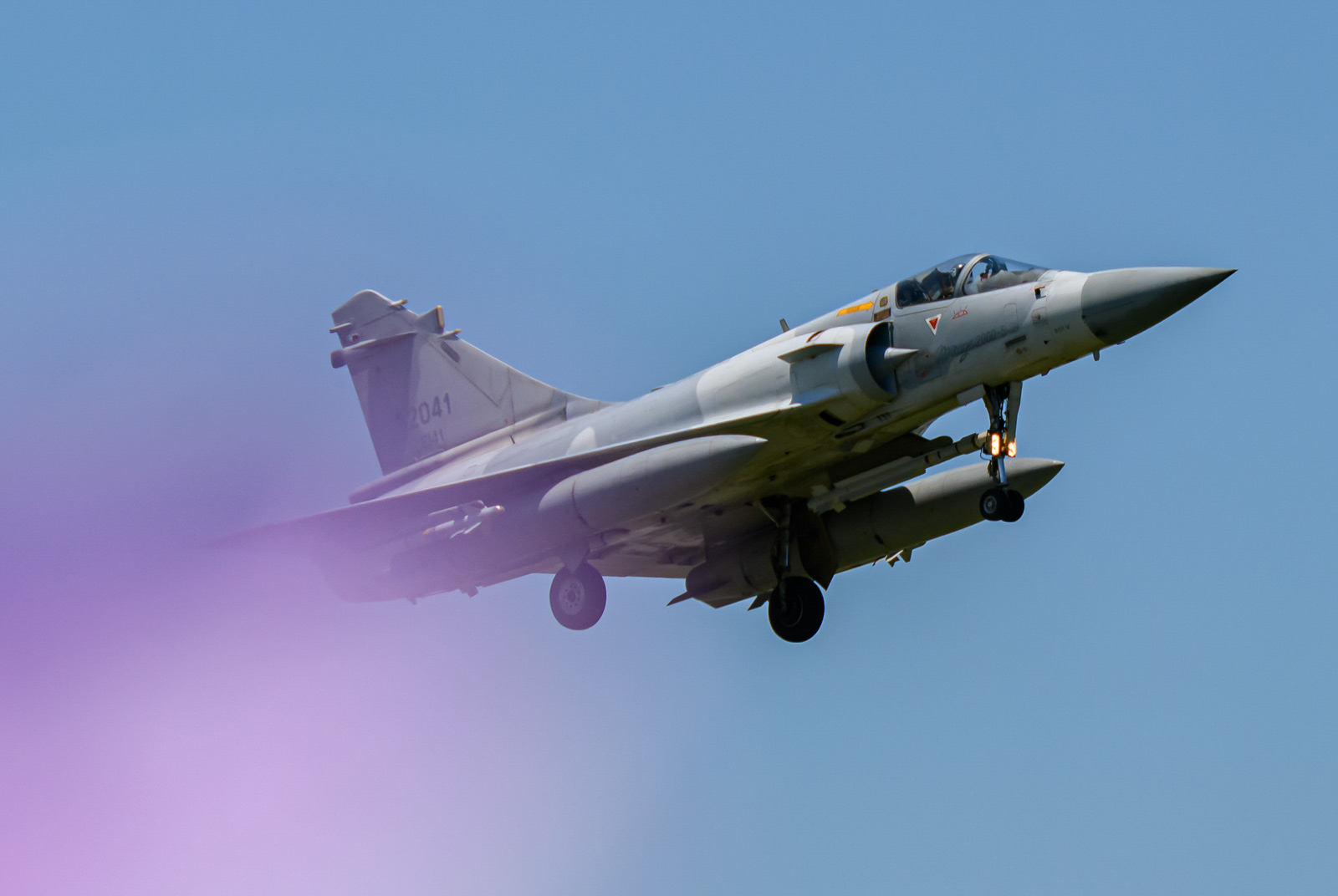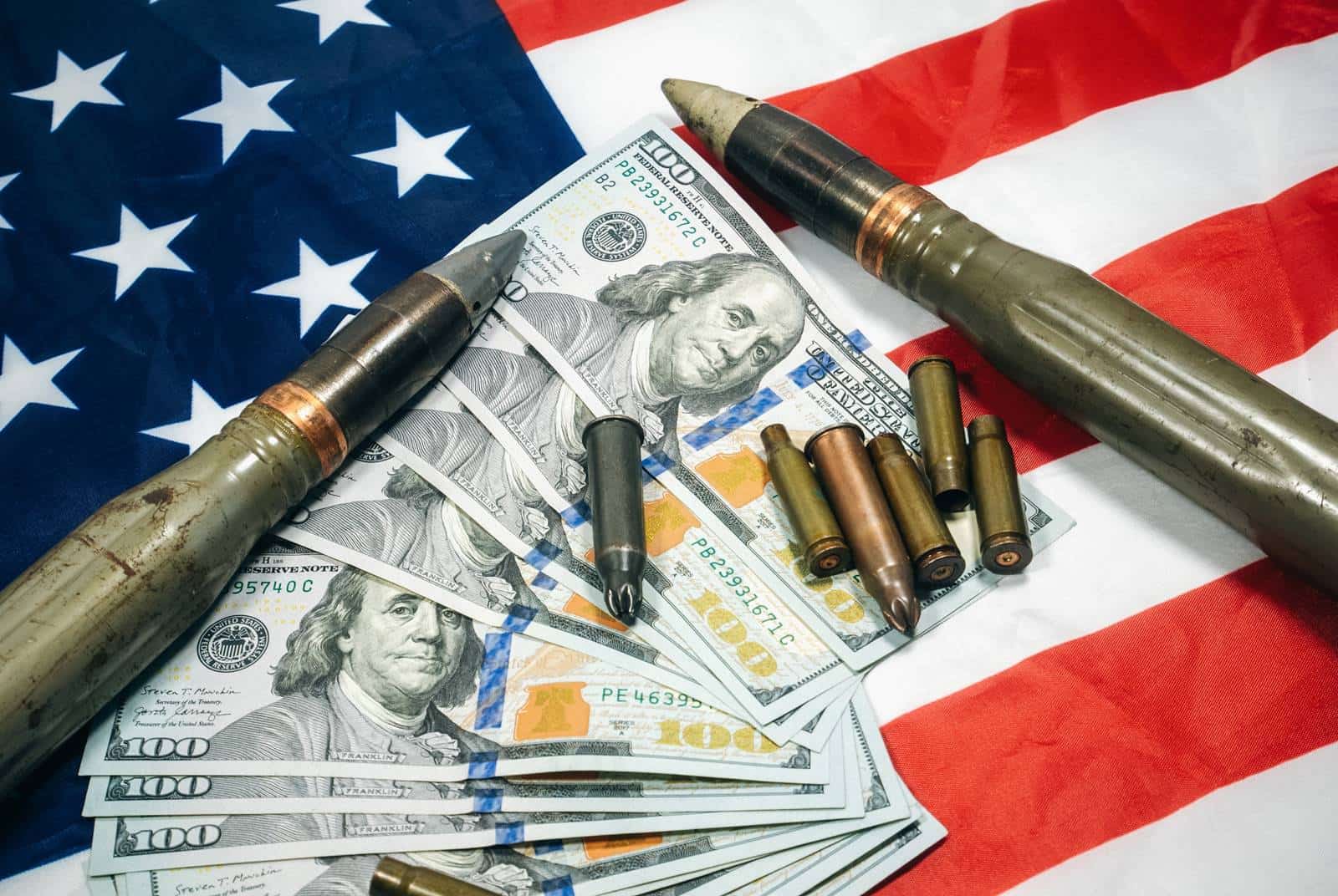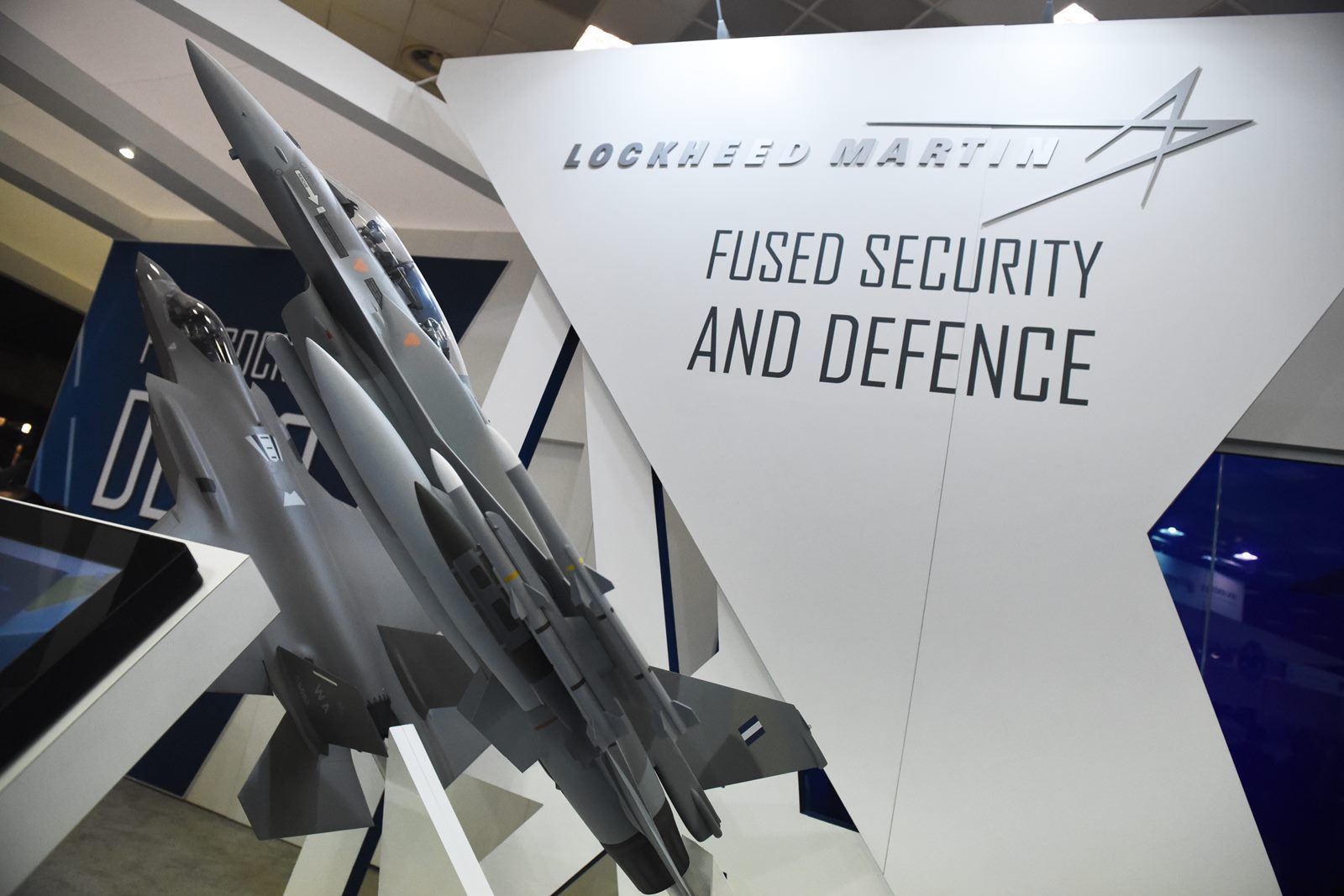The story behind the Taiwan visit of US defense contractors

Source:Pei-Yin Hsieh
What is behind Washington’s decision to send a delegation of 25 defense contractors to Taiwan for discussions on defense industry cooperation? What does Taiwan stand to gain?
Views
The story behind the Taiwan visit of US defense contractors
By Shu-ren Kooweb only
In early May, a delegation of 25 defense contractors led by Steven Rudder, the retired commander of the U.S. Marine Corps Forces Pacific, arrived in Taiwan to attend the Taiwan-U.S. Defense Business Forum, jointly organized by the U.S.-Taiwan Business Council and the Taiwan External Trade Development Council (TAITRA). During their stay, the American visitors also toured the National Chung-Shan Institute of Science and Technology (NCSIST), private sector arms manufacturers and other parts of Taiwan’s military-industrial complex.
Why does the United States want to deepen defense industry cooperation with Taiwan now?
 (Source: shutterstock)
(Source: shutterstock)
The answer might seem simple: It is due to the Chinese military threat. Yet, weapons and ammunition deals involve a high level of secrecy, necessitating protracted complex legal procedures for the export of sensitive military technology. Why is Washington willing to go through even more trouble to engage in defense industry cooperation with Taiwan?
A more profound reason for Washington’s overture is its new defense strategy, which emphasizes the deepening of military cooperation with allies and partners. On top of that, the U.S. defense industry lacks production capacity. Therefore, military cooperation counterparts are not only Washington’s traditional allies in the Indo-Pacific region but also potential cooperation partners.
Let’s first talk about the U.S. defense strategy.
US strategy: producing arms and ammunition in cooperation with military allies
The 2022 National Defense Strategy, released by the U.S. Department of Defense last October, places a primary focus on the following: First, it aims to strengthen U.S. deterrence against China. Second, it advocates closer military collaboration with a growing network of U.S. allies and partners to jointly counter the Chinese military threat.
The report mentions two facets of military cooperation: First, the U.S military must integrate with allies and partners through investments in interoperability to improve the ability for joint operations and strengthen deterrence against China.
Since the military forces of allies and partners have different command, communications, intelligence, and training methods and use weapons of differing specifications, better interoperability is necessary for joint military action.
While joint training and military exercises are helping toward that aim, interoperability can be also substantially improved through arms deals or joint arms production so that the same weapons and ammunition are used.
The second aspect of military cooperation is assisting allies and partners to bolster their own military strength. They are asked to shoulder their own responsibility for deterring China, thus easing the burden of the U.S in terms of fiscal means, manpower, and weaponry.
If allies and partners produce weapons and ammunition themselves as part of military cooperation, pressure will ease on Washington to provide U.S.-made arms and ammunition to them.
 (Source: shutterstock)
(Source: shutterstock)
The establishment of security groupings such as AUKUS and Quad in the Asia-Pacific region, increased deployment of U.S. troops in Australia and the Philippines, U.S. support for higher Japanese defense spending, and an amendment of the national defense strategy are all part and parcel of the expanded military cooperation outlined in the new National Defense Strategy.
Why does Washington believe that even closer military industry cooperation is necessary now?
This is because U.S. defense contractors are simply not able to ramp up arms production fast enough to meet rising demand.
Labor shortages in the US defense industry
In February, the National Defense Industrial Association in the United States published a report titled Vital Signs, based on a survey of its member companies. The report concluded that the American defense industry currently does not have sufficient production capacity to meet rising demand for weaponry amid the re-emergence of great power competitions (between the U.S. and China, and between the U.S. and Russia).
It points to several reasons:
After the end of the Cold War, the U.S. military mostly invested in the fight against terrorist organizations, neglecting investment in deterring threats from great power competition.
Secondly, the U.S. defense industry lost 2.1 million workers over the past three decades as manufacturing jobs were relocated abroad, the service industry expanded, and digitalization progressed. Defense contractors now face labor shortages and cannot find sufficient engineers and skilled workers to increase production capacity.
Moreover, as the Wall Street Journal and Bloomberg news agency report, defense contractors are still reeling from the aftermath of the Covid-19 pandemic, when supply chains were disrupted, and workers made redundant.
Defense contractors Lockheed Martin, which produces F-16 fighter aircraft, and Raytheon, which makes Patriot anti-air missiles, announced at investor conferences half a year ago that they lost many experienced skilled workers and engineers during the three-year-long pandemic. They predicted that the labor shortage would continue, causing production delays. As a result, Lockheed Martin expects to deliver the F-16 that were originally scheduled to arrive in Taiwan this year with a one-year delay.
On top of that, U.S. stockpiles of various weapons and munitions have been depleted due to the ongoing war in Ukraine, affecting U.S. plans to increase its military strength in the Asia-Pacific region.
Shorter supply chains in the defense industrial base
The U.S. think tank Center for Strategic and International Studies (CSIS) suggested in its report Reviving the Arsenal of Democracy: Steps for Surging Defense Industrial Capacity, published in March, that a strategy of working with allies can alleviate some of the strain on the domestic defense industry. “ ’Ally-shoring’ or ‘friend-shoring’ —one approach that has been identified to take advantage of any existing capacity in the industrial bases of close allies—may be able to accelerate the potential for surge,” the report stated.
Aside from Taiwan, which countries are in Washington's sights in terms of defense industry cooperation?
The top priority counterpart is Australia. Washington’s main goal in striking the AUKUS agreement with Britain and Australia in September 2021 was to assist Australia in building a fleet of nuclear-powered submarines to lessen the U.S. Navy’s burden in countering China’s growing assertiveness in the Asia-Pacific region.
At the same time, the Australian government founded a government-backed defense enterprise that partners with Raytheon Australia and Lockheed Martin Australia to manufacture and maintain guided weapons and their components for the Australian military within three to five years.
Other potential collaborators include India and Indonesia. India’s army relies on a large arsenal of Russian weapons, whereas Indonesia has substantial military cooperation with China. Washington hopes to use defense industry cooperation and arms sales to curb Russian and Chinese influence on these countries and draw them closer into its circle of allies.
Which Taiwanese defense contractors could make the cut?
What does Taiwan get out of defense industry cooperation?
When it comes to deterring the Chinese military threat, Taiwan is situated at the frontline. It is also an important partner for Washington for expanding defense industry cooperation.
Lai Ming Cun, General manager of ChenFull Precision Co., Ltd (Source: Chien-Tong Wang)
Rupert Hammond-Chambers, president of the U.S.-Taiwan Business Council and co-leader of the delegation, points out that Washington has another reason for engaging in defense industry cooperation with Taiwan. Weapons from the U.S. must be delivered to Taiwan by sea or air, but Chinese military exercises around the island in mid-August last year showed that Taiwan is at risk of a Chinese blockade. “Therefore, we need to make preparations on Taiwan proper as much as possible,” he said.
Su Tzu-yun, head of the Division of Defense Strategy and Resources at the Institute for National Defense and Security Research, notes that American defense contractors used to procure many components from Chinese suppliers. But given fierce competition between the U.S. and China, American arms manufacturers are eager to replace China-made parts and components. Against this backdrop, Taiwanese suppliers have naturally become an option.
Some Taiwanese suppliers have already made it into the U.S. defense industry supply chain. Taiwanese manufacturers process aluminum alloys for F-35 fighter jets, and manufacture touchscreens for F-22 tactical fighter aircraft, Apache attack helicopters and Black Hawk helicopters, as well as controllers for Patriot missile launchers and cartridges.
Yet, what Taiwanese manufacturers should go for are weapons and ammunition the island needs most to engage in asymmetrical warfare, such as drones, Stinger surface-to-air missiles, Javelin anti-tank missiles and even Himars rocket launchers and Harpoon anti-ship missiles to replenish Taiwan’s arms and ammunition inventories.
Whether this can be achieved is not yet known. The answer hinges on how much Washington can trust Taiwan.
Taiwan should manufacture weapons for asymmetrical warfare
Washington has another compelling reason for pushing defense industry cooperation with Taiwan.
For the U.S., Taiwan’s strategic value has never been higher, so Washington has reason to strengthen its support. But Taiwan must also keep in mind that Washington’s ability to help Taiwan might be compromised due to domestic challenges in the U.S.
Taiwan’s Ministry of National Defense admitted in a report sent to the Legislative Yuan on May 3 that the Air Force, which procured a total of 66 F-16V fighters from Lockheed Martin, will not take delivery of the first batch of aircraft as scheduled later this year. The U.S. side recently notified Taipei about the delay, citing pandemic-related supply chain disruptions that push back the delivery of the fighter jets to the third quarter of 2024. This postponement deals a heavy blow to the Air Force’s efforts to quickly upgrade its capability to respond to the increasing Chinese air force incursions into Taiwan’s air defense identification zone.
A former high-ranking national security official who requested anonymity said that Taipei must understand that the greatest dilemma that Washington currently faces is that it lacks the resources to back Taiwan as much as it would like to, saying, “The spirit is willing, but the flesh is weak.”
Have you read?
- Should military conscription be extended? Defense think tank responds
- Taiwan Defense Minister: China won't take Taiwan in a fortnight
- Taiwan needs porcupine quills to deter China
Translated by Susanne Ganz
Edited by TC Lin
Uploaded by Ian Huang






